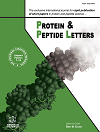
Full text loading...

The skin of amphibians performs some vital roles, such as camouflage, ion and water transport, and gas exchange. Additionally, it plays a significant role in the immune system by preventing pathogen invasion. The secretions produced by the granular glands in the skin possess antimicrobial properties, which help prevent harmful microorganisms from entering the animal's body. The study aims to determine the total protein amounts in the secretion of Pelophylax bedriagae (Levant water frog) distributed in Türkiye and to reveal whether it has antimicrobial properties. In this context, it is a pioneering study on antimicrobial peptides in the skin secretion of Pelophylax.
Field research was carried out at İzmir, Türkiye’s Homeros Valley. Because AMPs are species-specific, not sex-specific peptides, both male and female adults were used, regardless of sex. The average weight of the animals used in the experiment was 21 grams. Granular glands were stimulated using a specialized device, and the secretions were collected for analysis. The collected secretions were lyophilized after centrifugation. Then, the total protein amount in the secretion was determined by Bicinchoninic Acid (BCA). The antibacterial activities of the skin secretions against Escherichia coli and Staphylococcus aureus were assessed using a plate well diffusion assay. The peptide profiles in the skin secretions were determined using the Tricine-SDS-PAGE electrophoresis method.
The plate well diffusion assay demonstrated that the skin secretions created a 21 mm inhibition zone against E. coli and a 20 mm inhibition zone against S. aureus. The results of the Tricine-SDS-PAGE electrophoresis revealed the presence of peptides with five different molecular weights, including one smaller than 5 kDa. As a result of the analysis, it was determined that P. bedriagae secretion exhibits antimicrobial properties, and many proteins with different molecular masses were identified in the skin secretion.
There are no skin secretion studies on P. bedriage in the literature. However, activity studies were also conducted on the skin secretion of another Pelophylax species, P. ridibundus. The study examined the antibacterial activities of the skin secretion against some gram-positive and gram-negative bacteria using a plate well diffusion assay. Their study showed that E. coli formed a 21 mm zone and S. aureus formed a 24 mm zone.
This study is preliminary, and in future studies, AMPs in skin secretions can be isolated by chromatographic methods, such as HPLC, and peptides can be sequenced and identified in detail.